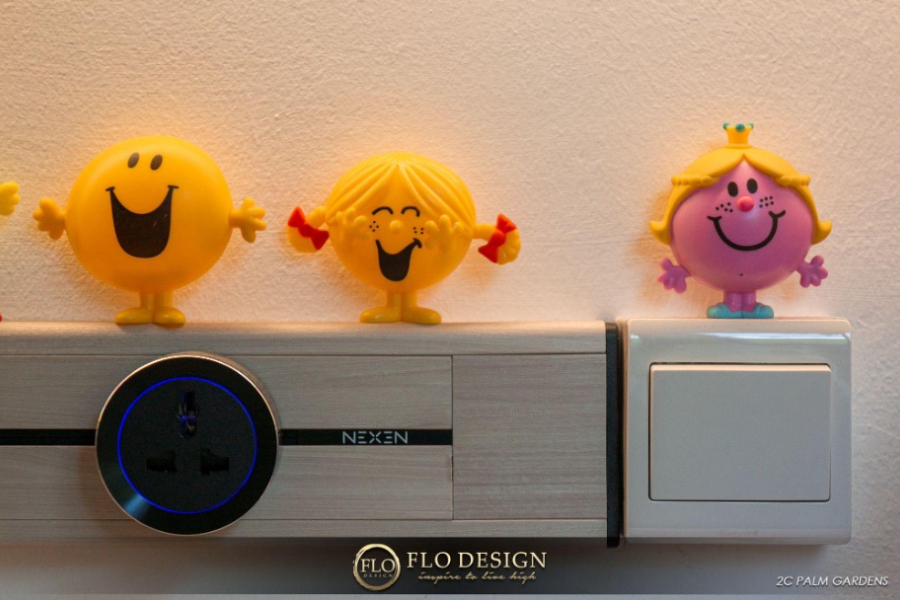
When designing a playroom, it’s essential to think beyond the present. Creating a child-friendly space that adapts to their changing needs is key. Children grow quickly, and their needs, interests, and preferences can change dramatically over the years. Crafting a space that adapts to these changes not only saves time and money but also ensures your child continues to enjoy and utilise the room as they grow.
Here are some practical tips to help you design a playroom that grows with your child.
Start with a flexible layout
The foundation of a long-lasting playroom lies in its layout. Opt for an open floor plan that allows for easy reconfiguration as your child’s needs evolve. By keeping large pieces of furniture to a minimum and arranging them against the walls, you can maximise floor space for play. This approach is particularly beneficial in smaller homes or condo unit interior design, where space efficiency is crucial.
Invest in adaptable furniture
Furniture that grows with your child is a game-changer. Adjustable tables and chairs, for example, can accommodate toddlers and teenagers alike. Modular storage systems are another excellent choice, as they can be reconfigured or expanded to suit different stages of your child’s life. Look for pieces that serve multiple purposes, such as a bench with built-in storage or a bed that transitions from toddler size to full size.
Choose a timeless colour palette
While it may be tempting to go all out with bright and playful colours, opting for a neutral base allows the playroom to transition seamlessly as your child grows. Soft greys, whites, and beiges create a versatile backdrop that can be easily updated with colourful accessories, wall decals, or artwork reflecting your child’s current interests. Neutral tones also blend well with the overall aesthetics of your home.
Prioritise smart storage solutions
A well-organised playroom is key to maintaining its functionality and appeal. Incorporate a variety of storage options, such as open shelves for frequently used items and closed cabinets for less frequently accessed toys or supplies. Labelled bins and baskets make it easier for your child to tidy up independently, fostering a sense of responsibility. As your child grows, these storage solutions can easily transition from holding toys to storing books, gadgets, or craft supplies.
Create zones for different activities
A playroom that grows with your child should cater to a variety of activities. Designate specific zones for play, study, and relaxation to ensure the space remains functional and enjoyable. For younger children, this might include a reading nook, an arts and crafts corner, and an area for imaginative play. As they grow older, these zones can evolve into a study area, a gaming corner, or even a mini gym.
Incorporate personal touches
Adding personal elements to the playroom makes it a space your child will cherish. Display their artwork, incorporate their favourite colours, or include furniture that reflects their personality. Over time, these elements can be updated to match their changing tastes. Involving your child in the decision-making process not only makes them feel valued but also ensures the room aligns with their preferences.
Think ahead with flooring and wall treatments
Durable and easy-to-maintain materials are a must for a playroom. Choose flooring that can withstand spills, scratches, and wear over time. Vinyl, laminate, or low-pile carpets are excellent options. For walls, consider washable paint or removable wallpaper that can be refreshed as your child’s tastes change. This approach allows you to adapt the room without extensive renovations.
Incorporate technology thoughtfully
Technology will inevitably play a role in your child’s life, so consider integrating it into the playroom in a way that doesn’t overpower the space. Install outlets in convenient locations, include a desk with room for a laptop or tablet, and ensure there’s adequate lighting for screen use. As your child grows, these features will support their academic and recreational activities.
Ensure safety and practicality
Safety is a top priority in any playroom. Use furniture with rounded edges, secure heavy items to the wall, and cover outlets to protect younger children. As they grow older, these safety features can be adjusted or removed. Additionally, opt for washable and durable materials for furniture and accessories to ensure the room remains functional and low-maintenance over time.
Plan for future transformations
A playroom doesn’t have to remain a playroom forever. Design the space with an eye on its potential future uses. Could it become a home office, a guest room, or a hobby space? Making adaptable choices now ensures the room remains a valuable part of your home, no matter how your family’s needs change.
Designing a playroom that grows with your child is an investment in both creativity and practicality. By focusing on flexibility, timeless design, and smart functionality, you can create a space that evolves seamlessly alongside your child. Whether you’re working within a small apartment or a spacious home, thoughtful planning makes all the difference.
For tailored solutions that bring your vision to life, consider Flo Design. With expertise in creating dynamic and functional spaces for families, Flo Design helps you transform your playroom into a versatile haven that stands the test of time. Explore our services to discover how we can assist in making your home both stylish and adaptable.




